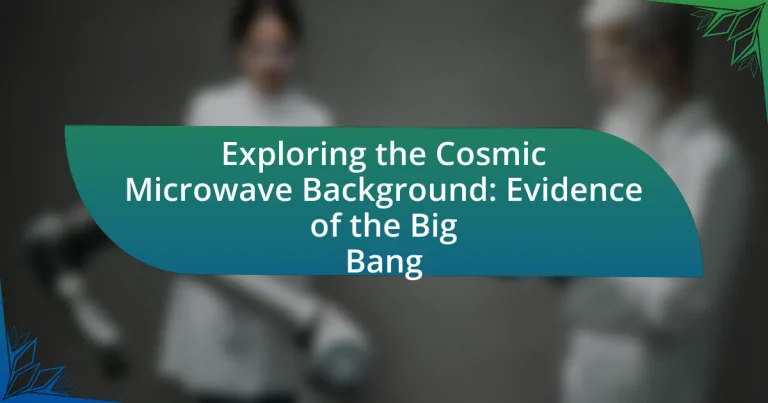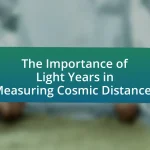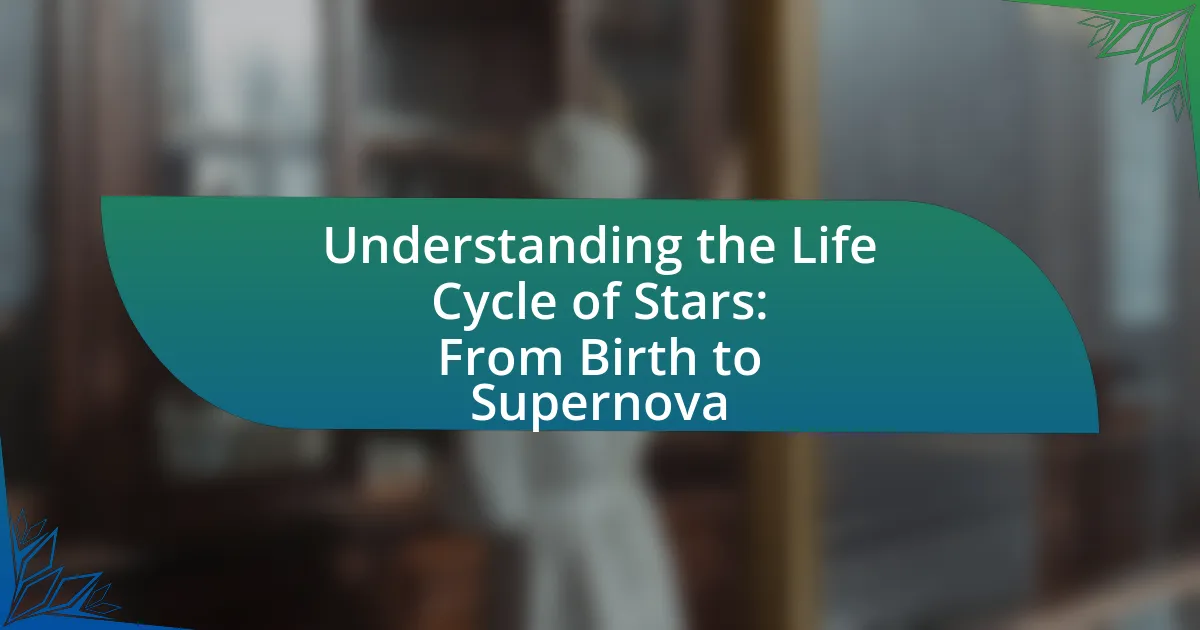The Cosmic Microwave Background (CMB) is the remnant radiation from the Big Bang, providing crucial evidence for the universe’s early conditions approximately 380,000 years after the event. Discovered in 1965 by Arno Penzias and Robert Wilson, the CMB exhibits a uniform temperature of about 2.7 Kelvin and slight fluctuations that correspond to density variations in the early universe, which later evolved into galaxies. Key instruments like the COBE, WMAP, and Planck satellites have refined our understanding of the CMB, revealing essential parameters about the universe’s age, composition, and expansion rate, thereby reinforcing the Big Bang theory and its implications for cosmic structure formation.
--The-Cosmic-Microwave-Background-(CMB)-is-the-remnant--1.webp)
What is the Cosmic Microwave Background (CMB)?
The Cosmic Microwave Background (CMB) is the remnant radiation from the Big Bang, filling the universe and providing a snapshot of the early cosmos approximately 380,000 years after the event. This radiation is uniform and isotropic, with a temperature of about 2.7 Kelvin, and it serves as a critical piece of evidence supporting the Big Bang theory. The CMB was first detected in 1965 by Arno Penzias and Robert Wilson, who found it to be a faint glow in the microwave spectrum, confirming predictions made by cosmological models.
How was the CMB discovered?
The Cosmic Microwave Background (CMB) was discovered in 1965 by Arno Penzias and Robert Wilson, who detected a persistent microwave radiation that was isotropic across the sky. Their findings were a result of using a radio telescope at Bell Labs, which initially aimed to study radio waves from the Milky Way. The radiation they observed was later identified as the remnant heat from the Big Bang, providing strong evidence for the Big Bang theory. This discovery was pivotal in cosmology, confirming predictions made by earlier theoretical work, including that of George Gamow and others, who suggested that the universe should be filled with this afterglow radiation.
What instruments were used to detect the CMB?
The instruments used to detect the Cosmic Microwave Background (CMB) include the COBE (Cosmic Background Explorer), WMAP (Wilkinson Microwave Anisotropy Probe), and Planck satellite. COBE, launched in 1989, provided the first detailed measurements of the CMB’s spectrum and anisotropies, confirming its blackbody nature. WMAP, launched in 2001, mapped the CMB with high precision, revealing the universe’s age and composition. The Planck satellite, launched in 2009, further refined these measurements, providing a detailed map of the CMB fluctuations and improving our understanding of the universe’s early conditions.
What were the key experiments that led to its discovery?
The key experiments that led to the discovery of the Cosmic Microwave Background (CMB) include the work of Arno Penzias and Robert Wilson in 1965, who detected a persistent microwave signal using a horn antenna. Their findings confirmed the existence of the CMB, which is a remnant radiation from the Big Bang. This discovery was pivotal as it provided strong evidence for the Big Bang theory, aligning with predictions made by cosmological models. The CMB’s uniformity and spectrum matched theoretical expectations, further validating the Big Bang hypothesis.
Why is the CMB important in cosmology?
The Cosmic Microwave Background (CMB) is important in cosmology because it provides critical evidence for the Big Bang theory. The CMB represents the afterglow radiation from the early universe, specifically from about 380,000 years after the Big Bang, when protons and electrons combined to form neutral hydrogen, allowing photons to travel freely. This radiation is uniform and isotropic, with slight fluctuations that correspond to the density variations in the early universe, which later evolved into galaxies and large-scale structures. The precise measurements of the CMB, particularly from missions like the Wilkinson Microwave Anisotropy Probe (WMAP) and the Planck satellite, have allowed cosmologists to determine key parameters of the universe, such as its age, composition, and rate of expansion, reinforcing the Big Bang model as the leading explanation for the origin of the universe.
How does the CMB provide evidence for the Big Bang theory?
The Cosmic Microwave Background (CMB) provides evidence for the Big Bang theory by representing the afterglow radiation from the early universe, specifically from about 380,000 years after the Big Bang. This radiation is uniform and isotropic, with slight fluctuations that correspond to the density variations in the early universe, which eventually led to the formation of galaxies. The CMB’s temperature is approximately 2.7 Kelvin, consistent with predictions made by the Big Bang model. Additionally, the discovery of the CMB by Arno Penzias and Robert Wilson in 1965 confirmed the existence of this relic radiation, supporting the idea that the universe has expanded from a hot, dense state.
What information does the CMB reveal about the early universe?
The Cosmic Microwave Background (CMB) reveals critical information about the early universe, specifically its temperature, density fluctuations, and the overall geometry. The CMB is a relic radiation from the Big Bang, providing a snapshot of the universe approximately 380,000 years after its formation. It shows that the universe was hot and dense, with a nearly uniform temperature of about 2.7 Kelvin, and it contains tiny fluctuations that indicate the seeds of all current cosmic structures. These fluctuations correspond to variations in density, which led to the formation of galaxies and clusters. The precise measurements of the CMB, particularly from missions like the Wilkinson Microwave Anisotropy Probe (WMAP) and the Planck satellite, have confirmed the Big Bang theory and provided estimates of key cosmological parameters, such as the age of the universe, which is approximately 13.8 billion years.

What are the characteristics of the Cosmic Microwave Background?
The Cosmic Microwave Background (CMB) is characterized by its uniformity, isotropy, and blackbody spectrum. It represents the afterglow radiation from the Big Bang, with a temperature of approximately 2.7 Kelvin. The CMB exhibits slight temperature fluctuations, which correspond to density variations in the early universe, providing evidence for the formation of large-scale structures. These fluctuations were measured by missions such as the Wilkinson Microwave Anisotropy Probe (WMAP) and the Planck satellite, confirming the predictions of the Big Bang theory and supporting the standard model of cosmology.
What is the temperature of the CMB?
The temperature of the Cosmic Microwave Background (CMB) is approximately 2.7 Kelvin. This temperature is a remnant of the Big Bang and represents the thermal radiation filling the universe. The CMB was first measured by Arno Penzias and Robert Wilson in 1965, providing strong evidence for the Big Bang theory.
How is the temperature of the CMB measured?
The temperature of the Cosmic Microwave Background (CMB) is measured using sensitive microwave detectors that capture the faint radiation emitted from the early universe. These detectors, often mounted on satellites or ground-based observatories, analyze the spectrum of the CMB radiation to determine its temperature, which is approximately 2.7 Kelvin. For instance, the Wilkinson Microwave Anisotropy Probe (WMAP) and the Planck satellite have provided precise measurements of the CMB temperature by mapping its anisotropies and fluctuations across the sky, confirming the uniformity of the CMB and its significance as a remnant of the Big Bang.
What does the temperature tell us about the universe’s evolution?
The temperature of the universe provides critical insights into its evolution, particularly through the study of the Cosmic Microwave Background (CMB) radiation. The CMB, which has a temperature of approximately 2.7 Kelvin, represents the remnant heat from the Big Bang and indicates that the universe was once in a hot, dense state. As the universe expanded, it cooled, and the temperature measurements of the CMB allow scientists to infer the rate of expansion and the age of the universe, estimated to be about 13.8 billion years. This cooling trend supports the Big Bang theory and helps to understand the formation of cosmic structures over time.
What is the significance of the CMB’s uniformity?
The significance of the Cosmic Microwave Background (CMB) uniformity lies in its indication of the early universe’s homogeneity and isotropy, supporting the Big Bang theory. This uniformity suggests that the universe was in a hot, dense state shortly after its inception, leading to the same temperature across vast distances. Measurements from the Wilkinson Microwave Anisotropy Probe (WMAP) and the Planck satellite have shown that the temperature fluctuations in the CMB are minimal, with variations of only about one part in 100,000. This consistency reinforces the idea that the universe expanded uniformly, providing crucial evidence for the Big Bang model and helping to understand cosmic evolution.
How does uniformity support the theory of cosmic inflation?
Uniformity supports the theory of cosmic inflation by explaining the observed homogeneity of the universe on large scales. The cosmic microwave background (CMB) radiation exhibits a remarkably uniform temperature across vast distances, which inflation theory accounts for by proposing that the universe underwent rapid expansion shortly after the Big Bang. This rapid expansion would have smoothed out any initial irregularities, leading to the uniformity observed in the CMB. Empirical data from the Wilkinson Microwave Anisotropy Probe (WMAP) and the Planck satellite confirm this uniformity, showing that temperature fluctuations in the CMB are minimal, consistent with predictions made by inflationary models.
What are the implications of temperature fluctuations in the CMB?
Temperature fluctuations in the Cosmic Microwave Background (CMB) imply variations in the density and distribution of matter in the early universe, which are crucial for understanding cosmic structure formation. These fluctuations, measured by the Wilkinson Microwave Anisotropy Probe (WMAP) and the Planck satellite, reveal the seeds of galaxies and large-scale structures, indicating how matter clumped together under gravity. The amplitude and scale of these fluctuations provide insights into fundamental cosmological parameters, such as the Hubble constant and the density of dark energy, thereby shaping our understanding of the universe’s expansion and evolution.

How does the Cosmic Microwave Background relate to the Big Bang?
The Cosmic Microwave Background (CMB) is the remnant radiation from the Big Bang, providing critical evidence for the event. Formed approximately 380,000 years after the Big Bang, the CMB represents the thermal radiation filling the universe, which has cooled and stretched over time. Its uniformity and slight fluctuations support the Big Bang theory, as these variations correspond to the density fluctuations that led to the formation of galaxies. The discovery of the CMB by Arno Penzias and Robert Wilson in 1965 confirmed predictions made by the Big Bang model, solidifying its status as a cornerstone of modern cosmology.
What evidence does the CMB provide for the Big Bang model?
The Cosmic Microwave Background (CMB) provides strong evidence for the Big Bang model by representing the afterglow radiation from the early universe, approximately 380,000 years after the Big Bang. This radiation is uniform and isotropic, with slight fluctuations that correspond to the density variations in the early universe, which eventually led to the formation of galaxies. The temperature of the CMB is measured to be about 2.7 Kelvin, consistent with predictions from the Big Bang theory. Additionally, the CMB’s spectrum matches that of a perfect black body, further supporting the idea that it originated from a hot, dense state. The discovery of the CMB by Arno Penzias and Robert Wilson in 1965 provided critical observational evidence that corroborates the Big Bang model, as it aligns with theoretical predictions made by cosmologists.
How do the CMB’s anisotropies support the Big Bang theory?
The Cosmic Microwave Background (CMB) anisotropies support the Big Bang theory by providing evidence of the early universe’s density fluctuations. These anisotropies, which are tiny temperature variations in the CMB, reflect the distribution of matter and energy shortly after the Big Bang, consistent with predictions made by the theory. Specifically, the patterns observed in the CMB, as mapped by missions like the Wilkinson Microwave Anisotropy Probe (WMAP) and the Planck satellite, align with the inflationary model of the universe, indicating that the universe underwent rapid expansion. The statistical analysis of these anisotropies reveals a flat geometry of the universe and supports the existence of dark matter and dark energy, further validating the Big Bang framework.
What role does the CMB play in understanding cosmic structure formation?
The Cosmic Microwave Background (CMB) plays a crucial role in understanding cosmic structure formation by providing a snapshot of the universe approximately 380,000 years after the Big Bang, revealing the density fluctuations that led to the formation of galaxies and large-scale structures. These fluctuations, measured in the CMB, indicate regions of slightly different temperatures, which correspond to variations in density; denser regions eventually collapsed under gravity to form stars and galaxies. The precise measurements of the CMB, particularly from missions like the Wilkinson Microwave Anisotropy Probe (WMAP) and the Planck satellite, have confirmed the existence of these fluctuations and allowed cosmologists to derive key parameters of the universe, such as its age, composition, and the rate of expansion, thereby solidifying the connection between the CMB and the formation of cosmic structures.
What are the current theories about the CMB’s implications?
Current theories about the Cosmic Microwave Background (CMB) suggest that it provides critical evidence for the Big Bang theory, indicating the universe’s early hot and dense state. The CMB’s uniformity and slight anisotropies support the inflationary model, which posits rapid expansion after the Big Bang, explaining the observed large-scale structure of the universe. Additionally, the CMB’s temperature fluctuations correlate with density variations, which are essential for understanding galaxy formation. These implications are supported by data from missions like the Wilkinson Microwave Anisotropy Probe (WMAP) and the Planck satellite, which have measured the CMB’s properties with high precision, confirming predictions of the Big Bang model and providing insights into the universe’s composition, including dark matter and dark energy.
How do scientists interpret the data from the CMB?
Scientists interpret the data from the Cosmic Microwave Background (CMB) by analyzing its temperature fluctuations and polarization patterns to understand the early universe’s conditions. These fluctuations provide insights into the density variations that led to the formation of large-scale structures in the universe. By applying models of cosmic inflation and using statistical methods, scientists can extract parameters such as the universe’s age, composition, and expansion rate. The precision measurements from missions like the Wilkinson Microwave Anisotropy Probe (WMAP) and the Planck satellite have confirmed the Big Bang theory, revealing that the universe is approximately 13.8 billion years old and composed of about 68% dark energy, 27% dark matter, and 5% ordinary matter.
What future research is planned to further explore the CMB?
Future research planned to further explore the Cosmic Microwave Background (CMB) includes the launch of the NASA-led PICO satellite mission, which aims to measure the polarization of the CMB with high precision. This mission is designed to enhance our understanding of the early universe and the physics of inflation. Additionally, the European Space Agency’s Euclid mission will investigate dark energy and dark matter, providing complementary data that could shed light on the CMB’s implications for cosmic evolution. These initiatives are supported by advancements in observational technology and theoretical models, ensuring a robust framework for future discoveries related to the CMB.
What practical applications arise from studying the CMB?
Studying the Cosmic Microwave Background (CMB) has practical applications in cosmology, astrophysics, and technology. The CMB provides critical insights into the early universe’s conditions, allowing scientists to refine models of cosmic evolution and understand fundamental physics, such as the nature of dark matter and dark energy. For instance, the precise measurements of the CMB’s temperature fluctuations by the Planck satellite have led to improved estimates of the universe’s age, composition, and expansion rate. Additionally, techniques developed for analyzing CMB data have applications in other fields, such as medical imaging and telecommunications, where similar signal processing methods are utilized.
It is not possible to answer the question “
” as it does not provide a clear inquiry or context for a response.




